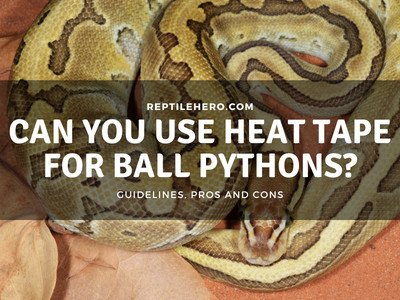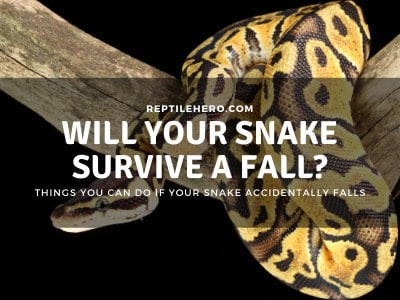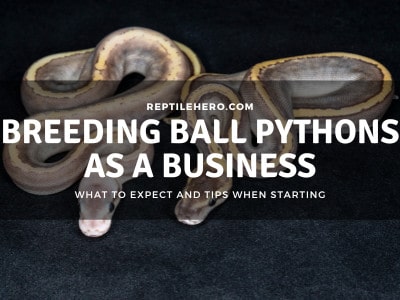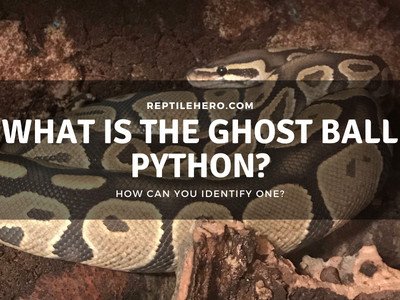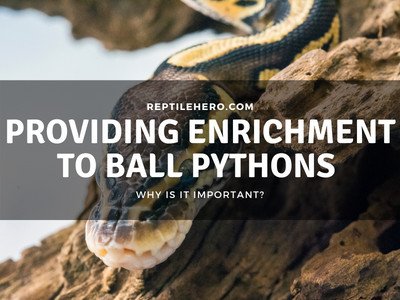Do Ball Pythons See Red Light? (Should You Use One?)
You got your first ball python, and a clerk in the pet store offered a red light that he/she says is beneficial for your snake. You bought it thinking a little more spending will definitely improve the life of your pet. But is this true? Or just another marketing strategy?
Ball pythons do not see red light as they are dichromatic. Like most snakes, ball pythons can only see color in the green and blue spectrum. Red lights are non-harmful to ball pythons but must be kept on/off at a proper day/night cycle.
These lights might seem pleasing to you, but how about for your snake? Are there any benefit/s for them, or will it cause complications? Find out more as your read below.
Effects of Using Red Light on Your Ball Python
Red lights are not harmful to ball pythons. Besides the heat and the light it can potentially give, it can also help the day/night cycles of a ball python.
Red-colored lights are often used as dimmed nocturnal light. Some say that this type of light can be on for 24 hours but I suggest that any light inside an enclosure of a ball python must be turned off at night.
These will allow your ball python to know whether it is day or night. Which will then cause them to act naturally based on their instincts.
The color of light does not always indicate the heat that they emit. However red iridescent lights can provide a great hot spot of 90F for your ball python.
Do Ball Pythons Need Light?
Ball pythons need light, they cannot stay constantly in the dark. Artificial lighting for a ball python’s enclosure is not required if exposed already to natural indirect light coming from a nearby window, but it can sometimes be better to simulate their day/night cycles.
For colder countries, an overhead lighting/heat source is recommendable for their metabolism.
Ball pythons do not need light at night. If you are wondering if you can turn on the light at night to check on them, it is perfectly fine. Because usually in the wild, the moon also provides a bit of dim light for them.
Personally, I do not use a light fixture for my ball python. But he is located in our dining area and he is near a window, so he is exposed to light at a proper day/night cycle.
Best Artificial Lights for a Ball Python (Pros and Cons)
Having a good light source has its benefits like proper heat and proper day/night cycles. There are 3 different lights you can use for your ball python, namely: 1) Incandescent heat lights, 2) UVB Fluorescent lights, and 3) LED lights.
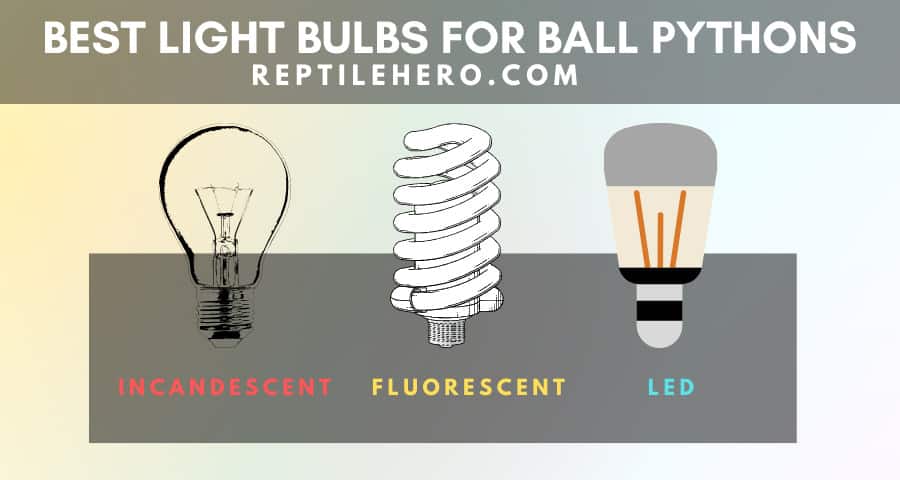
Artificial light fixtures are not “needed” by ball pythons since they get essential nutrients like calcium from their prey. So the minimum light they should have are typical room lights.
Another thing to keep in mind, a thermostat and timer is recommended for every light/heat fixture you use for your ball pythons. This can prevent accidents like burning and overheating.
Incandescent Heat Lights
These are one of the most commonly used lights used for reptiles. They can also be used for ball pythons but only in small wattages.
The benefits of such lamps are that they 1) give heat and 2) be quite cheap.
Can give high heat. Though this is good for other reptiles, ball pythons don’t usually bask. But this can also be given to them especially if you are in a temperate/cold country. Basking spots must not be higher than 90F.
Recommended bulb wattage must be 60W or lower like this on Amazon. These day and night bulbs have a good wattage and do not produce that much heat, though I would recommend turning off lights during the night even if it is made as a light night.
Cheaper than other lights. The upfront costs of these lights are much lower than other kinds and around a tenner.
The risks of such lamps are that they 1) skin burns, 2) must be set on a timer, 3) expensive long term, and 4) reduces humidity.
Can burn a ball python. An exposed heat light incandescent inside the enclosure can easily burn a ball python. Always put it inside a lamp and not directly inside an enclosure
Must be on a timer. Leaving this bright light on 24/7 can disrupt the day/night cycle of your ball python which can lead to health and behavioral issues. Non-stop use can also damage the light which leads to a dim/broken bulb.
More expensive for long-term usage. These bulbs are commonly used as heat lights since 90% of the power goes to heat and only 10% to light. They may be cheaper upfront but they consume more energy compared to other light bulbs.
Greatly reduces humidity from an enclosure. Proper humidity is essential for a ball python to have better shedding and health.
Tip: For a lower light heat lamp, I suggest using an infrared heat light. I recommend 50-70 watts for a moderate hot spot temperature.
LED Lights
Commonly used for lighting and viewing purposes, LED lights are brighter than incandescent bulbs of the same wattage. This will lead to less energy consumption with the same light intensity.
The benefits of such lamps are that they are 1) energy-efficient, 2) very pretty and 3) easy to use
Energy-efficient. LED bulbs have a high chance of outlasting incandescent bulbs. This makes them cheaper when it comes to long-term usage.
Aesthetically pleasing. This type of light is typically used for display enclosures and racks which can showcase even more the beauty of your ball python.
Ease of use. Whether it comes as a light strip or light bulbs, LEDs are the easiest to set up. They can also be placed inside an enclosure with a barrier since they emit less heat, which means the risks of burning and overheating are lessened.
The risks of such lamps are that they are 1) too bright, 2) lack of heat, 3) expensive upfront, and 4) must be set on a timer.
Can be too bright. Though ball pythons can generally tolerate bright lights, for prolonged hours I recommend an LED that can be remotely controlled. Like this one on Amazon which has different variations in colors and intensity.
It also comes as a light strip, which is very convenient when it comes to its placement in/near the enclosure.
Lacks heat. Depending on your location, keeping the proper temperature for a ball python is hard to do using an LED bulb. LED light can only heat to around 130F which if placed overhead, can produce a hotspot of around 70-80F.
More expensive upfront costs. LED bulbs are more expensive compared to other types of bulbs due to their complex manufacturing. But these upfront costs can be greatly outweighed by their long-term usage.
Must be set on a timer. Since they are brighter than other lighting options, if this kind of light bulb is on 24/7 a ball python may be too stressed out.
UVB Fluorescent Bulbs
UVB bulbs are not required in keeping a ball python healthy. However if given in the right amount (3-7%), they can still slightly improve a ball python’s immune system and health. If given in excessive amounts (10% and above), UVB light can be harmful to a ball python.
Such lamps 1) improve health 2) improve adequate brightness and 3) good for a bioactive setup.
Improves health. Even though ball pythons generally do not need a UVB light source, studies show that a UVB bulb improves their Vitamin D levels and their D3 metabolism [3]
This means that compared to a ball python not exposed to a UVB light, those exposed are seen to absorb calcium better from their prey.
Gives the right lighting. Compared to LED and Incandescent bulbs, UVB light bulbs are less bright. This low light can provide good lighting to your enclosure while making sure that your ball python won’t get too stressed out.
A 5% UVB bulb like this one from Amazon is a good choice that comes in different sizes and is recommended by other ball python keepers.
Good for bioactive setups. These kinds of setups typically have vegetation and other inhabitants like springtails and isopods. These living organisms inside a bioactive enclosure can greatly benefit from UVB light which can lead to a high chance of success.
The risks of such lamps are that they are 1) can be harmful, 2) lack of heat, 3) expensive upfront, and 4) must be set on a timer.
Excessive amounts can be harmful. Ball pythons exposed at long periods of time to UVB lighting with a bulb of 10% and above is not advisable.
It can cause illnesses like photodermatitis and eye illnesses. Albino morphs also do not do well with too much UVB exposure compared to other morphs [4]
Lacks heat. UVB Fluorescent lights can emit heat but are insufficient for a standard basking spot temperature. Ball pythons don’t typically need a basking spot, those who are in a cold environment are recommended to have one.
More expensive upfront costs. UVB bulbs are more expensive compared to other types of bulbs due to their complex manufacturing. In terms of energy efficiency, they are in the mid-range compared to LED and incandescent bulbs.
Must be set on a timer. Since it is advisable to follow the day/night cycles, UVB bulbs must only be on for up to 12 hours per day.
Types of Artificial Light That are Harmful to Ball Pythons
Some types of light bulbs can have a high chance of harming your ball python. The two most common examples are Halogen and UVC light bulbs
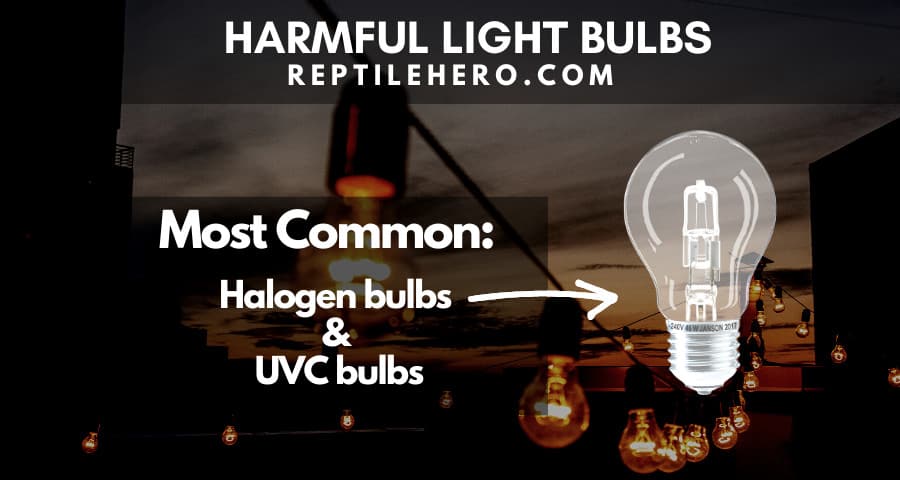
Halogen Light Bulbs
Halogen bulbs are a variation of incandescent light. Even though they are more efficient, their brightness and heat are way above the recommended hot spot for a ball python. A typical 75W Halogen bulb can get hot up to 260F.
If it is situated above the enclosure at a 12-inch height, the hot spot it can produce can go upwards of 140-150F. This temperature can make a ball python overheat which is stressful and can be fatal in prolonged durations.
These light bulbs can also heat up very quickly which is alarming when used as a reptile heating light. It cannot also be dimmed because it will cause the light to fail/malfunction.
UVC Light Bulbs
UVC light bulbs are generally used as a disinfectant. When used for a ball python, it can cause severe tissue damage even for a low dosage.
Natural UVC does not reach the earth’s surface and is blocked by the ozone layer. This means that ball pythons do not encounter this type of light in the wild.
UVCs are also very damaging to the eyes, especially when stared at directly. This light spectrum can also cause respiratory diseases.
Things to Remember Before Using a Light for Your Ball Python
Before installing an artificial light set-up for a ball python, it is important to check 1) duration, 2) temperature, 3) distance, and 4) hides to ensure the animal’s well-being and safety.
Duration
The light schedule must follow the day and night cycle. Meaning it should be on for 10-12 hours and must be turned off for at least 12 hours. Since ball pythons and nocturnals, this practice will stimulate their natural behaviors like hiding during the day and being out at night.
I would also discourage turning on lights 24/7, this will be unnatural to them, and since they are nocturnal animals this practice can stress them out causing them to not eat or come out of their hides.
Tip: If you want an overhead heating fixture to run 24/7 then I suggest using a deep heat projector that emits little to no light at all. I also recommend that it should be used with a thermostat to have an optimal temperature.
Temperature
Too much heat can stress out a ball python and since most ball pythons in captivity are not in deep burrows, the temperature emitted from lights must not be above 90F to avoid burns and overheating.
I would recommend a dim light with the wattage and hotspot of 40-60 watts and 90F. A thermostat is also recommended to regulate the heat properly.
It also must have a proper barrier to avoid your snake getting burned from getting too close. This lamp has a dim light setting and a clamp that can be attached to different sizes of enclosures.
Tip: You should test out first the light bulb on an enclosure before using it with your ball python. You can increase/decrease the temperature by elevating it or putting an additional barrier.
Distance
For ball pythons, the recommended distance of artificial light must be at least 12 inches above the substrate. It must be in between a protective mesh to reduce light, heat, or UV rays which is suitable for a ball python.
You can also use a protective barrier for interior heat lights like a wired mesh or products like this one from Amazon. This comes in different sizes but for a precaution, it must still be elevated above the substrate/ basking spot.
Hides
A well-lit enclosure must have at least 1 hide. It is recommended to have 2 hides for the hot and cold gradients inside the enclosure. One must be the humid hide and the other one is the hot hide.
Breeders sometimes don’t use hides in their rack systems, this is because they don’t use a light fixture near their ball pythons. They use the room lights which is enough to stimulate a ball python’s day/night cycles.
Ball pythons do not usually bask in the sun, so having hides can give them an option to cool down and feel secure.
Personally, I do not use lights since I live in a tropical country so I only provide 1 appropriately sized hide and a water dish.
Eyesight Condition of Ball Pythons
Ball pythons, like most snakes, have poor vision and can only see a subject at short distances. If their subject of interest is far away, one meter or so, they may appear blurry in the snake’s vision.
Even though ball pythons cannot see a red light, they can still see “infrared” light. A study shows that they can detect a prey’s infrared radiation through their pit organs in a detection area of 30cm [1].
Ball pythons also see infrared signatures even at night. This is through the usage of their pit glands which senses body heat in their surroundings.
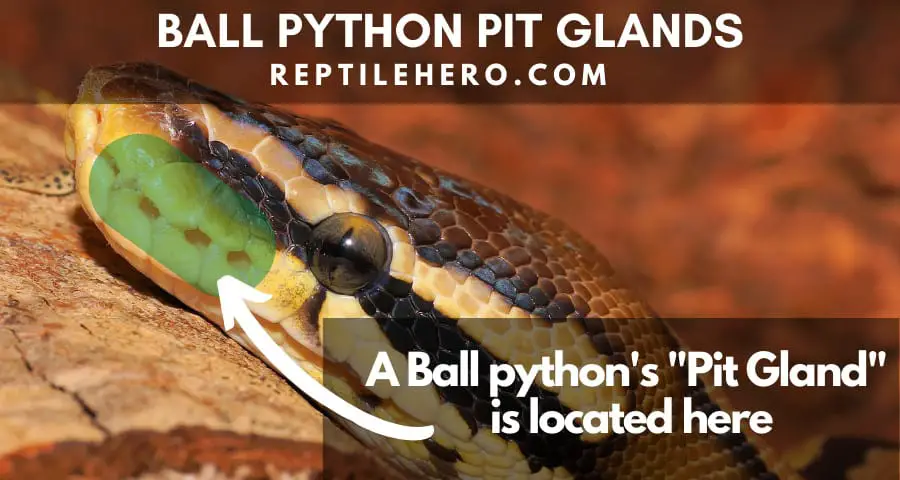
A study also suggests that ball pythons can see ultraviolet lights. These can even help them sense prey with the UV trail they leave [2]
Bright lights won’t cause any issues to ball python’s eyes (except for albinos) but prolonged exposure is not suitable for them. Being nocturnal animals, ball pythons prefer to be active during the night.
Further Questions
Can I use regular lights for a ball python?
As long as it is not that bright and the heat produced is enough, regular lights can be used. I recommend a maximum of 1000 lumens which must only be on for 10-12 hours per day. The temperature must not exceed 90F. Then it should have a protective barrier and be set at the right distance (at least 12 inches)
Can ball pythons sleep with red lights on?
As long as they have a proper hide dark and secure enough for them, they can sleep even if the lights are red lights. Since these kinds of bulbs are often used as a nocturnal light, they are seen to be doing their nocturnal activities.
Studies show that they can still see the light emitted from a red light which is why hides are an essential part of their enclosure.
Do ball pythons sleep with their eyes closed?
No, they sleep with their eyes open. Ball pythons cannot blink because they do not have eyelids. So when they are sleeping, a translucent, thin membrane called “brille” is the one covering their eyes.
What can I do to heat a ball python enclosure 24/7?
Ceramic heat emitters (CHE), Deep heat projectors (DHP), and heat mats can be used as an alternative to heat lights. Even though these heating peripherals can be turned on 24/7, a thermostat and cover are still recommended to prevent overheating and burns.
Summary on Whether or not Ball Pythons See Red Light
Red lights are not harmful to ball pythons. Besides the heat and the light it can potentially give, it can also help the day/night cycles of a ball python.
The recommended artificial light bulbs are: Incandescent heat lights, UVB Fluorescent lights, and LED lights. Then, light bulbs like Halogen and UVC are not recommendable and can harm your ball python.
Before installing an artificial light set-up for your ball python, you must remember to check the: Duration, Temperature, Distance, and Hides.
References
[4] https://sci-hub.se/https://pubmed.ncbi.nlm.nih.gov/20063823/

